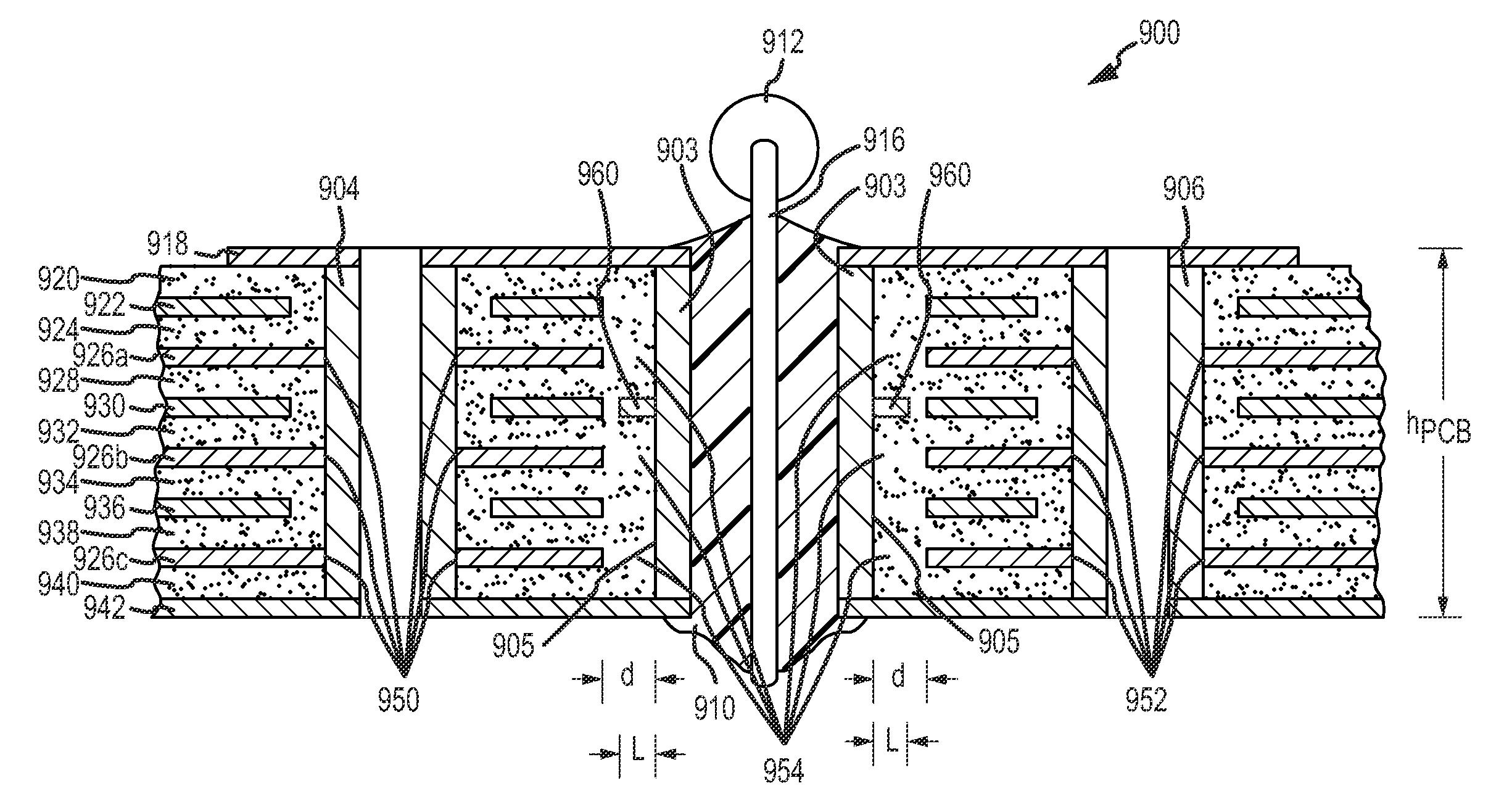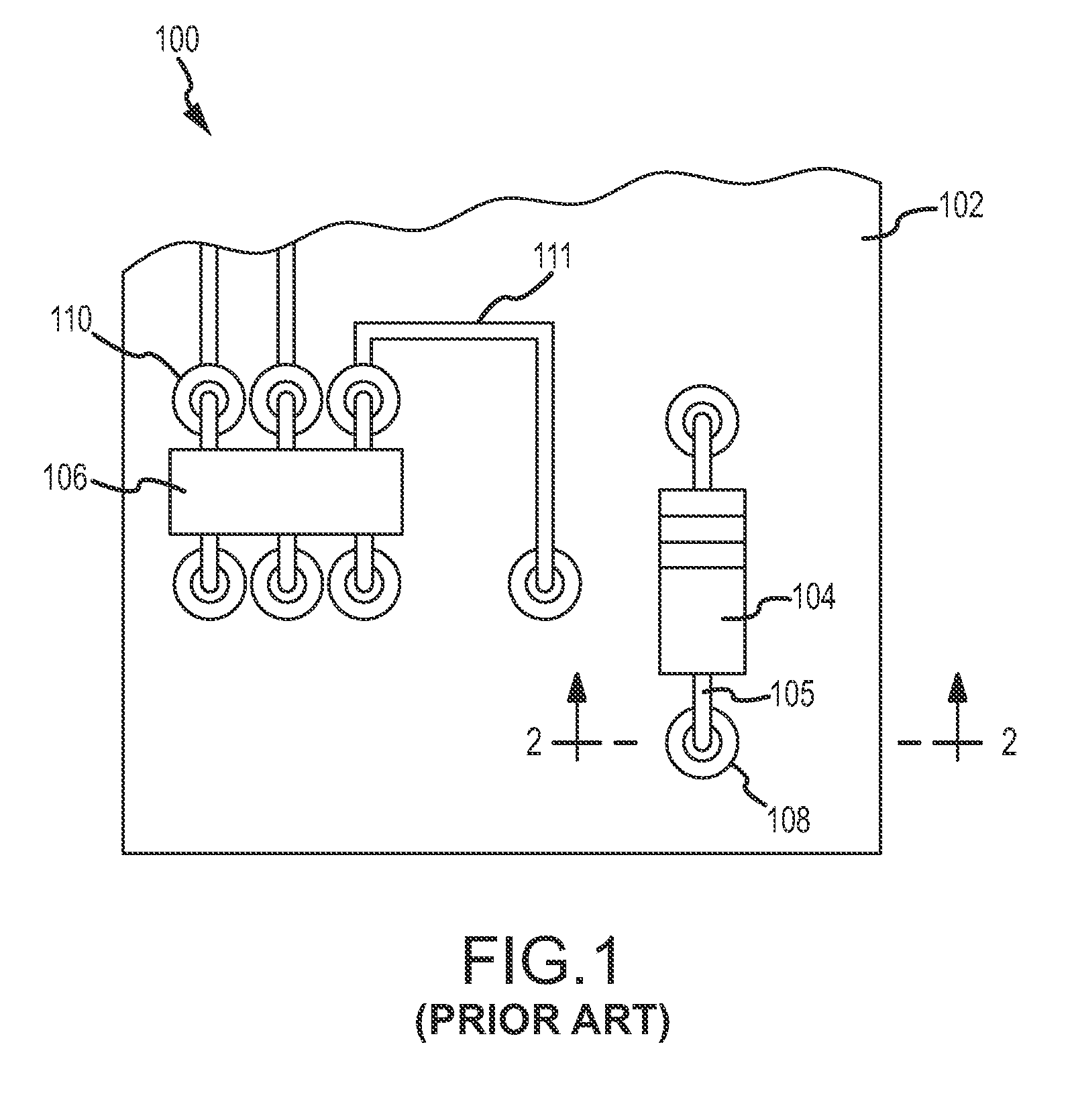Rib reinforcement of plated thru-holes
a technology of rib reinforcement and thru-hole, which is applied in the field of rib reinforcement of plated thru-hole, can solve the problems of limiting the available routing area of signal traces on layers immediately, requiring much more layout effort and higher initial cost than either wire, and reducing the likelihood of pth damage, etc., to reduce the heat sinking effect of pths, the effect of high reliability and reworkability
- Summary
- Abstract
- Description
- Claims
- Application Information
AI Technical Summary
Benefits of technology
Problems solved by technology
Method used
Image
Examples
Embodiment Construction
[0031]The present embodiments provide methods and systems for providing improved mechanical support for plated through-holes (PTH) in PCBs, which advantageously allows the PCBs to exhibit high reliability and reworkability. Such methods and systems are achieved by providing one or more electrically-nonfunctional (or unused) lands on one or more internal layers surrounding the PTHs. In this regard, the unused lands act as “anchors” to the outer walls of the PTHs, thereby reducing the likelihood that the PTHs will be damaged during assembly and / or rework processes. Additionally, the heat sinking effects of PTHs may be reduced by providing one or more vias surrounding the PTHs to provide an electrical connection between the PTH and the bottom layer of a PCB, thereby improving the soldering capabilities of the PTHs. In this regard, the PTHs may not directly contact all of the internal ground or power layers, so the heat sinking or heat transfer effects are reduced. This feature enables ...
PUM
| Property | Measurement | Unit |
|---|---|---|
| thickness | aaaaa | aaaaa |
| thickness | aaaaa | aaaaa |
| thickness | aaaaa | aaaaa |
Abstract
Description
Claims
Application Information
 Login to View More
Login to View More - R&D
- Intellectual Property
- Life Sciences
- Materials
- Tech Scout
- Unparalleled Data Quality
- Higher Quality Content
- 60% Fewer Hallucinations
Browse by: Latest US Patents, China's latest patents, Technical Efficacy Thesaurus, Application Domain, Technology Topic, Popular Technical Reports.
© 2025 PatSnap. All rights reserved.Legal|Privacy policy|Modern Slavery Act Transparency Statement|Sitemap|About US| Contact US: help@patsnap.com



